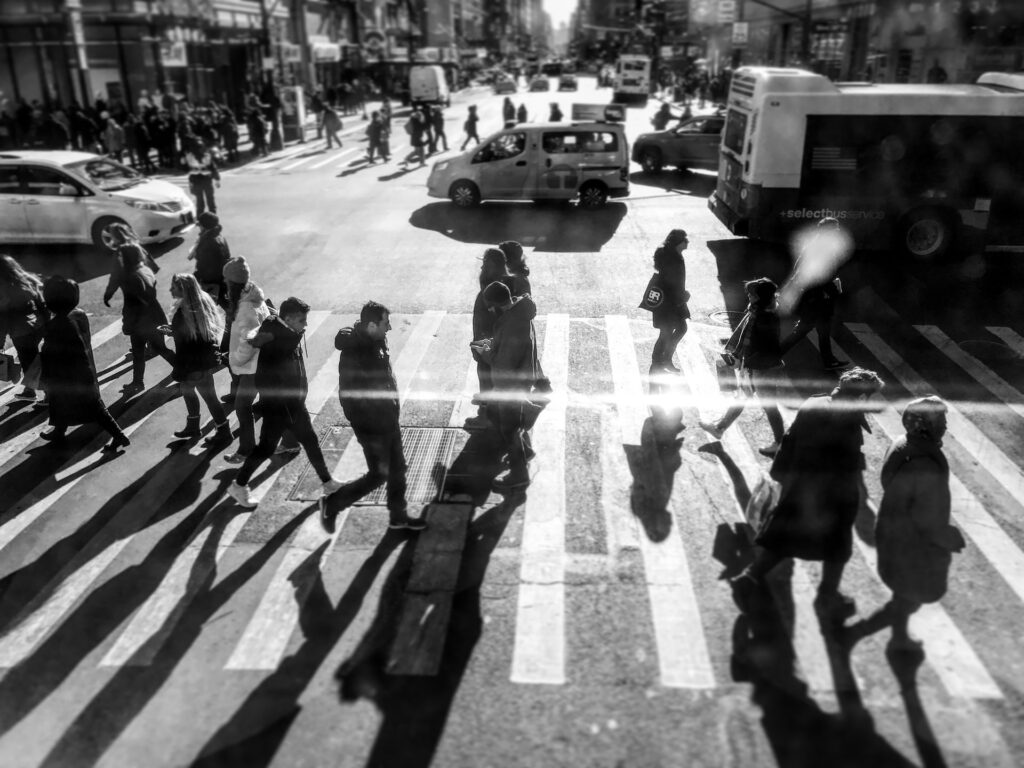
In Praise of Walking: Book Review
By Darla Graff
Readers of WALK Magazine know that walking does a lot for us, beyond just raising heart rate. Walking can clear our heads, allow time for reflection, and even stimulate creative thinking or problem-solving.
Have you wondered why that is? The book In Praise of Walking: A New Scientific Exploration [O’Mara, S. M. (2020). New York, NY: W.W. Norton & Company] takes the curious reader on a research-oriented journey to explain why walking is good not just for the body, but also the mind. Written by Shane O’Mara, and published earlier this year, In Praise of Walking illustrates how walking, even more than language, tool-making, or cooking food, has made humans unique.
The book moves from the evolution of walking upright to laboratory experiments that help us understand how walking is beneficial for our mental health and imagination. It’s a thorough and informative work providing insights into one of our most basic physical activities. O’Mara is himself an avid walker, and his enthusiasm is apparent throughout the book. He includes personal anecdotes several times to illustrate the point he is trying to make. While not a “how-to” book, O’Mara’s examination of walking’s advantages from several different perspectives can allow the reader to become a more discerning walker.
In Praise of Walking is well-researched. The author cites primary literature, so the science-minded reader can follow up if he/she is particularly interested in a subject. Others may find that many of the deep dives into particular details border on overkill. Fortunately, it is possible to skim these experiment-heavy sections without missing the main points.
What is Walking?
The physiological benefits of walking are noted and referenced occasionally, but this topic is a minor part of the book. Instead, the focus is on the brain’s relationship to walking and walking’s effect on brain activity. Knowing that the author is a Professor of Experimental Brain Research at Trinity College in Dublin, Ireland, this is no surprise.
Consider that organisms that don’t move around in their life, such as trees and anemones, do not have brains. They obtain all of their food and other needs from their immediate environment. In contrast, a mobile organism’s brain will direct movement necessary to get food, shelter, and mates and avoid dangers. Because the brain, and therefore the mind, move through the world as we walk, we experience “cognitive mobility.” Being a “mind in motion” is a central theme of this book. It describes much research supporting the idea that walking is beneficial for the brain by improving cognition and mood and even creativity and socializing skills.
Anatomically, walking “involves extending muscles followed by flexing muscles in alternating sequences, a rhythmic pattern controlled by nerve cells of the spinal cord.” (p. 33). True for humans, it also applies to four-legged animals, primates that practice “knuckle-walking,” and even the “little skate,” a cartilaginous fish that uses its hind fins to “walk” along the seafloor. The genes that control walking in all species have been around for gazillions of years, as shown by fossilized footprints of ancient creatures. The walking genes have adapted to environmental pressures, and as a result, walking looks different for each one.
Human walking is notably different and gave our ancestors significant advantages. Humans are also able to walk farther than all other primates. We cover more territory with less energy than other species, which was critical when walking was necessary to obtain food. Humans are also good at gathering up food since upright walking means our hands are free. These features allowed us to spread all over the earth, starting from Africa. Even walking only 5 kilometers (3.1 miles) a day, it would take a few years to cover many thousands of kilometers. Early migrating walkers would have traveled in groups, meaning that walking developed as a social activity.
How We Walk
Two chapters are devoted to how walking happens. The seemingly simple task of putting one foot in front of the other is, in truth, a complicated process directed by the brain and carried out by a central pattern generator (CPG) in the spinal cord. A CPG is a nervous system circuit that produces regular rhythmic motor patterns.
To walk, standing upright and balanced is the first order of business. Once that happens, the brain can direct movement across the ground. The CPG then kicks in and provides control of the rhythm of walking. Feedback from the feet, legs, eyes, and ears is taken to the brain to interrupt the CPG if needed, for example, if a threat is perceived.
But how do we know where to go? A GPS-like system in the brain creates a “cognitive map” of our surroundings. In brief, the brain contains specialized cells that provide location information. For example, the hippocampus contains “place cells.” These cells literally recognize particular places in your environment. They are dormant until you arrive at a specific location, then they start firing. If you walk away from that location, they go quiet again. These cells obtain place information best during walking. We can get lost when our place cells aren’t providing a constant supply of information.
Other cells that form the inner GPS include “head-direction” cells to tell you which way your head is pointing, and grid cells that add information about distances. Yet other cell types tell you when you are next to a boundary, how fast your head is moving, and if you’re upright or not. What I’ve described here is just a small part of the brain’s machinery for building our inner map of the world.
City Walking

O’Mara devotes a chapter to the special case of walking in a city. While our walking ability developed in nature, more than half of us now live in cities. With crowds of people moving to different destinations, at different speeds, on unnatural surfaces, how do we avoid colliding with others and get where we want to go? Our brain acquires information on where another person is looking to predict where that person will walk. And the other person’s brain is doing the same thing when that person is looking at you. Social cues also help us navigate crowds. Lightning fast, our brains can interrupt the natural pattern of walking controlled by the CPG to avoid bumping into others or avoid threats.
Interestingly, the larger and more affluent a city, the faster people walk. Why would this be? The research suggests that quick walking is a result of competing for resources. In a crowded city, we need to be faster than others to get these resources, whether that’s a seat on a train or a table at a small restaurant that fills up quickly.
A good number of pages are devoted to a city’s walkability and the idea that cities should have green spaces to increase the amount and enjoyment of walking. O’Mara also makes the case that city green spaces are vital to our well-being. They can lower stress and have a refreshing effect similar to being in a more natural area. Early research suggests that walking may even reduce depressive episodes in patients who are clinically depressed, but careful studies are needed to confirm an effect.
Walking’s Mental Benefits
Thousands of research papers clearly show that walking also improves learning and memory. Have you heard that you can’t grow new brain cells? Scientists used to think this, but now they know that exercise like walking can contribute to new cell growth. Walking also increases the level of certain brain chemicals that strengthen connections between the cells. When you walk, you’re not just improving your heart health and muscle strength. You’re also keeping your brain active and operational.
Walking is an excellent aid to problem-solving. When walking, the mind will switch between an active mode, where it focuses and processes details, and a default mode, characterized by mind-wandering or focusing attention away from the outside environment. Some things that can happen in this distracted state include retrieving long-term memory, envisioning a possible future, and imagining others’ mindsets.
While mind-wandering might seem like a waste of time, O’Mara characterizes it as a type of housekeeping that allows us to “create a large-scale personal narrative.” (p. 148) Moving back and forth between the active and default mind-wandering modes contributes to combining ideas and, subsequently, creative thoughts. (This is true up to a point. When the pace of walking is so fast that you have to pay attention to walking instead of being able to think, the creative benefits of walking are lost.)
O’Mara goes so far as to suggest that we should get away from our desks and screens and stay in motion to maximize creativity and generate new ideas. “Expecting knowledge workers to generate deep and creative solutions to complex problems while seated in a crowded shared office is unreasonable and self-defeating.” (p. 158). Tell that to your boss!
How Much Should I Walk?
In different forms, the book repeats the vague advice to “walk lots” throughout the day, every day. There is very little in the way of actually suggesting a walking program. Yet, O’Mara stresses the importance of tracking walking in some way, because our memories are faulty and it’s easy to fool ourselves about how much we walk. While mentioning that he has a personal goal of 9,500 steps a day, as measured with a smartphone app, he would prefer to have 12,000 or even better, 14,5000. He doesn’t give reasons for these goals or suggest that anyone else follow them, though.
I was left wondering how I could optimize walking for different goals. Even absent specific advice, it would have been nice to have some resources for those looking to increase or improve their walking.
Just a few recommendations are sprinkled throughout the book:
- To walk for health, walk for at least 30 minutes, at least four or five times per week at a sustained speed of 5 or 5.5. kph (17:33-19:18 minutes per mile).
- For optimum “creative cognition,” walk fast, but not so fast that you have to monitor your walking.
- Walking even as little as about once a week may protect against depression.
- There is a correlation between good social activity, overall well-being, and walking in the elderly, with 150 minutes of walking per week reported as beneficial.
Conclusion
In spite of the comprehensiveness of the book, I still wanted to know more. For example, when should you run instead of walk, and vice versa? Is it possible to walk too much? Additionally, despite explaining how fast walking in a city results from competition for rewards, O’Mara devotes no time to the subject of actual competitive walking, even in the chapter on social walking. Oddly, the Olympic sport of race walking is not even mentioned.
Overall, these are minor criticisms, and I recommend this book to anyone interested in the mental benefits of walking. Before I read this book, I was sure that walking was good for my health, mood, and critical thinking. After reading this book, I know that these benefits are real and backed by science. In a world full of extreme workouts, proclaiming you’re a walker can seem a little underwhelming. After reading In Praise of Walking, you’ll feel like walking is your superpower.
_______
Darla Graff is an avid walker from Colorado.
(880)
